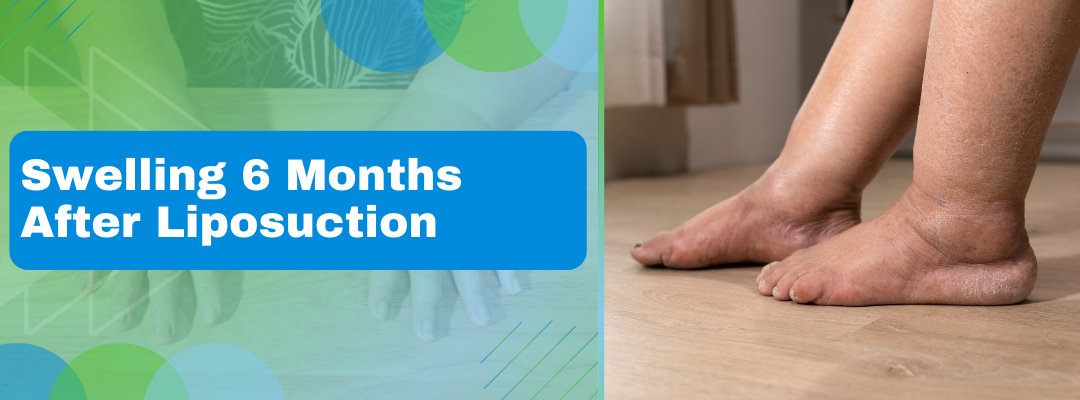It’s common to worry about swelling 6 months post liposuction. This article discusses potential reasons for prolonged swelling and its effects on recovery. Dr. Leena Jain shares her expert perspective on this issue.
She is a leading reconstructive microsurgeon and plastic surgeon in Mumbai. She has helped many patients in their post-surgery recovery. She has shared some valuable tips on liposuction and patient care to manage these issues.
Dr. Jain explains, “Swelling is expected after liposuction as part of healing. But, ongoing symptoms might suggest more serious conditions.” She utilizes a thorough evaluation and personalized care plans. This ensures each patient’s recovery progresses smoothly and addresses any concerns quickly.
This article aims to help you understand what is normal during recovery. And also, when it is the right time to consider seeking professional advice.
Need more information on recovery after liposuction? Consult with a plastic surgeon today to better understand your symptoms.
But what does it mean if swelling continues for six months? Let’s investigate.
Is it Normal to Have Swelling 6 Months After Liposuction?
Generally, post liposuction swelling diminishes within a few weeks to months. However, if swelling persists six months after your procedure, it’s important to recognize that, while unusual, it can still happen. Factors such as the procedure’s scope, individual healing rates, and adherence to post-operative care impact the duration of swelling.
Dr. Jain advises, “Careful attention to post-operative guidelines is crucial. Adhering to recommendations like wearing compression garments and managing physical activities is important.” She also notes that not following these recommendations can extend swelling and delay recovery. Thus, persistent swelling can be normal, especially if it is mild and gradually lessens.
Worried about ongoing swelling after liposuction? Speak with a professional for a customized recovery plan.
Persistent swelling after liposuction: What causes it? Let’s delve deeper.
Causes of Swelling 6 Months After Liposuction
Prolonged swelling can arise from various factors. The body’s response to surgical trauma is a common cause. “Liposuction is only slightly invasive. But, it involves removing fat cells. This triggers a long-lasting inflammatory response in some people,” Dr. Jain explains. Poor lymphatic drainage and fluid build-up can also worsen swelling.
Lifestyle choices after surgery also play a significant role. It is important to have a nutritious diet and adequate hydration. Also, you should avoid smoking, which can hinder healing. Individual responses to surgery vary based on genetics, age, and overall health. It influences recovery speed.

Need expert guidance on managing post-liposuction swelling? Speak with a qualified professional for personalized support.
What should you watch for if complications arise from prolonged swelling? Let’s consider.
Potential Complications
Persistent swelling may indicate serious complications that require immediate attention. Key warning signs include:
- Seroma Formation: Seromas are pockets of fluid that can develop under the skin after liposuction. If not properly absorbed by the body, they can lead to persistent swelling and discomfort.
- Hematoma: It is a collection of blood outside of blood vessels. It can occur if there is bleeding under the skin that isn’t managed during or after the procedure. Hematomas can cause swelling, bruising, and pain.
- Infection: While infections after liposuction are rare, they can occur. Swelling accompanied by redness, warmth, tenderness, or fever could indicate an infection. This requires prompt medical attention.
- Lymphedema: Liposuction can disrupt the lymphatic system. It leads to fluid buildup and swelling in the affected area. Lymphedema can cause discomfort and may require specialized treatment to manage.
- Delayed Healing: Some individuals may experience delayed healing after liposuction. It can result in prolonged swelling. Certain factors contribute to delayed healing. It includes inadequate post-operative care, excessive activity, and underlying health conditions.
- Fat Necrosis: Fat necrosis occurs when fatty tissue dies as a result of trauma, such as during liposuction. This can lead to inflammation and swelling in the affected area.
- Scar Tissue Formation: Excessive scarring, known as hypertrophic scars or keloids, can occur after liposuction. It happens especially if the incisions are not cared for during the recovery period. Scar tissue can contribute to persistent swelling and discomfort.
- Fluid Imbalance: Swelling may also be related to fluid imbalance within the body. It includes electrolyte abnormalities or fluid retention. This could be exacerbated by factors like medication, diet, or underlying medical conditions.
Dr. Leena Jain, a renowed plastic surgeon in Borivali, recommends monitoring any unusual symptoms and consulting a healthcare provider promptly. “Taking active steps to manage your health during recovery is essential,” she advises.
Uncertain about your post-liposuction symptoms? Discuss them with a specialist to ease your concerns.
How can you effectively manage swelling if it occurs? Here are some tips.
Managing Swelling 6 Months After Liposuction
Effective management of post-liposuction swelling involves professional advice and personal care efforts.
- Compression Garments: These garments reduce swelling by applying gentle pressure. This aids in contouring and promoting healing.
- Proper Nutrition: A balanced diet rich in proteins, vitamins, and antioxidants supports tissue repair and reduces inflammation.
- Adequate Hydration: Drinking enough water flushes out toxins, reduces fluid retention, and maintains skin elasticity.
- Healthy Lifestyle Choices: Avoiding smoking and excessive alcohol. Engaging in light activity, and getting enough rest support optimal healing.
- Follow-up Care: Regular appointments with your surgeon ensure monitoring and potential treatments. This enables prompt attention to any concerns.
Adhering to these practices can significantly enhance comfort and accelerate recovery.

When should swelling after liposuction be a concern? Let’s find out.
When Should You Be Concerned About Swelling?
While swelling is normal in healing, certain signs necessitate immediate medical attention, such as:
- If swelling continues to increase instead of decrease over time.
- If the swelling is accompanied by significant pain.
- If you experience fever alongside the swelling.
- If the area appears uneven or lumpy.
- If it persists beyond the typical healing period of a few weeks to months.
Want a smoother recovery journey after liposuction? Get in touch with a knowledgeable professional for peace of mind.
We’ve discussed much about managing swelling after liposuction. Let’s summarize the essential points.
Conclusion
In conclusion, swelling is normal after liposuction. But, we should not overlook swelling that is persistent or worrying. It is necessary to watch your recovery. Get medical help if you develop long or severe swelling. This may suggest hidden issues that need immediate treatment.
You should follow your healthcare provider’s recommendations. This includes wearing compression garments and maintaining proper nutrition and hydration. Further, adopting healthy lifestyle habits can help you achieve the best possible results.
FAQs
Are there any warning signs or symptoms I should watch out for that might indicate a complication related to the swelling?
Look out for excessive pain, increasing redness or warmth around the swollen area, fever, or any discharge, as these could signal an infection or other complication.
Can swelling be permanent after liposuction?
While some swelling is normal post-liposuction, permanent swelling is rare and typically resolves over time with proper care and follow-up appointments.
How long does swelling last after liposuction?
Swelling after liposuction can last anywhere from a few weeks to several months, gradually decreasing over time as the body heals and adjusts to the procedure.


